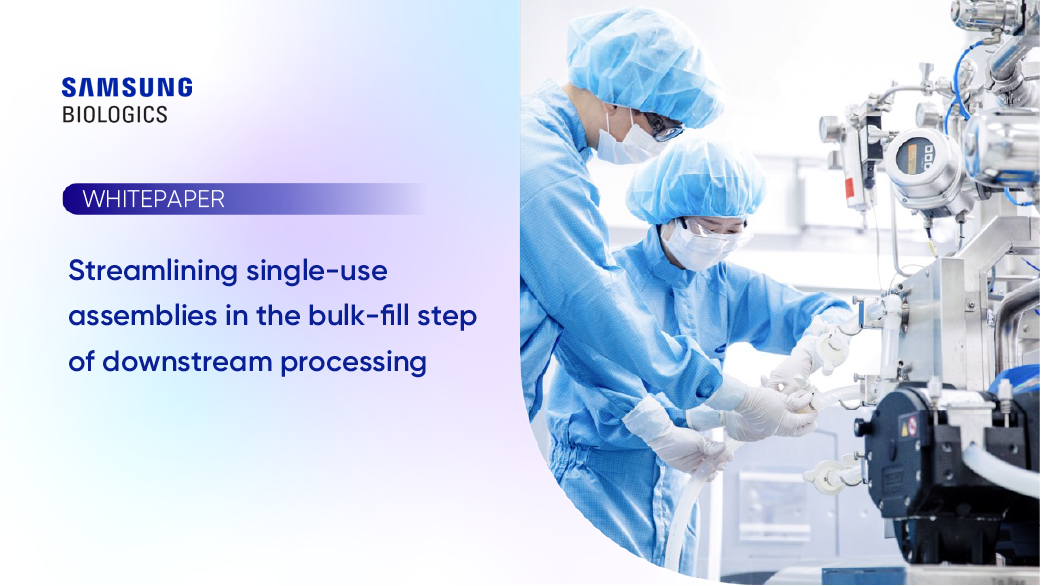Streamlining single-use assemblies in the bulk-fill step of downstream processing

Single-use systems for downstream manufacturing are effective in reducing contamination risks during the bulk fill stage. However, due to its complexity, streamlining a single-use system has a lot of challenges for validation.
In this whitepaper, we share insights on optimizing a standardized single-use system for the bulk fill process to enhance reliability and cost-effectiveness.
The current state of single-use technology in the biopharma industry
Although single-use (SU) systems have existed since the early 1980s, their widespread adoption into biomanufacturing is still limited for various reasons. One significant challenge is the lack of industry-wide standards, as suppliers of SU components prefer to offer differentiated rather than standardized SU products to consumers. Integrating single-use assemblies in bioprocessing, including in downstream processing, can greatly benefit suppliers and manufacturers despite the complex and challenging process of changing validated production assemblies. By allowing faster turnaround times between process runs and greater adaptability to different client projects, SU assemblies can significantly improve efficiency, ultimately leading to lower costs.
Key benefits of standardizing single-use components include:
- Improved cost-effectiveness: Standardizing single-use technology can significantly reduce inventory stocks at the manufacturing facility without risking supply discontinuation.
- Simplified documentation: Standardizing SU components can simplify the documentation process, saving work hours and reducing the need for additional procedures.
- Enhanced reliability: Standardizing aseptic single-use assemblies improves the robustness, reliability, and predictability of the process.

Single-use systems for downstream manufacturing are effective in reducing contamination risks during the bulk fill stage. However, due to its complexity, streamlining a single-use system has a lot of challenges for validation.
In this whitepaper, we share insights on optimizing a standardized single-use system for the bulk fill process to enhance reliability and cost-effectiveness.
The current state of single-use technology in the biopharma industry
Although single-use (SU) systems have existed since the early 1980s, their widespread adoption into biomanufacturing is still limited for various reasons. One significant challenge is the lack of industry-wide standards, as suppliers of SU components prefer to offer differentiated rather than standardized SU products to consumers. Integrating single-use assemblies in bioprocessing, including in downstream processing, can greatly benefit suppliers and manufacturers despite the complex and challenging process of changing validated production assemblies. By allowing faster turnaround times between process runs and greater adaptability to different client projects, SU assemblies can significantly improve efficiency, ultimately leading to lower costs.
Key benefits of standardizing single-use components include:
- Improved cost-effectiveness: Standardizing single-use technology can significantly reduce inventory stocks at the manufacturing facility without risking supply discontinuation.
- Simplified documentation: Standardizing SU components can simplify the documentation process, saving work hours and reducing the need for additional procedures.
- Enhanced reliability: Standardizing aseptic single-use assemblies improves the robustness, reliability, and predictability of the process.
Share article
Related Content